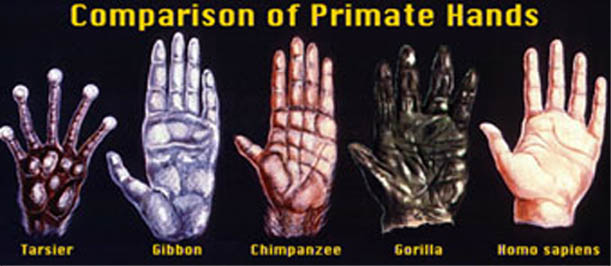None
Most users ever online was 387 on Tue Dec 05, 2023 7:35 pm
The newest registered user is Skylines3
Our users have posted a total of 47502 messages in 4941 subjects
| No user |
• The FREE hand reading services at the Modern Hand Reading Forum are being continued in 2019 with the assistance of Google adsense!

Learn how to read hands according the Modern Hand Reading paradigm & you can use this forum as your palm reading guide!
Psychology Today's fingerprint report: 'Orangutans, Mel Gibson and the bite test!'
Modern Hand Reading Forum - Discover the language of your hands: palm reading & palmistry forum! :: III - MODERN HAND READING - Various systems for reading hands! :: IIIa - Modern Palmistry: general topics, questions :: IIIj - News that relates to the activity of reading hands
 Psychology Today's fingerprint report: 'Orangutans, Mel Gibson and the bite test!'
Psychology Today's fingerprint report: 'Orangutans, Mel Gibson and the bite test!'

Orangutans, Mel Gibson and the bite test:
Social neuroscience may help understand orangutans
One more similarity between orangutans and human beings is that both of us have fingerprints, which is why a cop from the Netherlands went to Borneo this summer to fingerprint the apes.
The idea is to compile a global online database and family tree of orangutans to track them and study them. (Sumatra orangutans don't have whirls in their fingerprints like human beings, but the Borneo orangutans, a separate species, do.)
But what is even more intriguing than fingerprinting apes is the process of winning their cooperation to be fingerprinted. Don't think that you can force a big male orangutan to be fingerprinted. You have to win his trust and willingness first. He has to like you personally and to agree to do it.
This means that the type of person you are - your internal qualities and how you relate to others - is crucial. It is not unlike the kind of qualities that create an instant rapport on a first date with someone of the opposite sex.
I met the Dutchman Jan Geerdink on the island of Sulawesi, in Indonesia, this summer, while he was fingerprinting 600 orangutans. Geerdink may be the only person in the world who can see the difference between the fingerprint of an orangutan and that of someone like Mel Gibson or Lindsay Lohan, both of whom have needed to be fingerprinted at times in their lives.
Geerdink was 67 this summer, retired after 39 years as a police fingerprint expert who has helped solve 300 murder cases. He did the fingerprinting personally of the Serbian president Slobodan Milošević for the war crimes trial. (The trial ended after Milošević died in 2006 of a heart attack while still in custody.)
Geerdink was working this summer in Indonesia with two noble orangutan patriots, the maverick conservationist Willie Smits and his road warrior partner Richard Zimmerman of the New York-based Orangutan Outreach.
What interests me most about Geerdink is how a simple, straightforward, retired Dutch police officer with no prior knowledge or experience with orangutans could establish an instant rapport with an ape, while other, better equipped, more knowledgeable human beings are failing.
This may be one area of science where sheer knowledge of orangutans is not enough. Social skills are important.
Scientists and others working closely with orangutans tell us that orangutans have the same basic thoughts and feelings that we do. This means that even without a common language, communication and understanding may be possible.
It is also possible that social neuroscience can apply to the relationships between orangutans and human beings.
The idea of social neuroscience - originating with John Cacioppo and Gary Berntson in 1992 and popularized by Daniel Goleman, the author of the 2006 book Social Intelligence - is that our brains are biologically wired to allow us to relate to each other. We are not simply isolated and imprisoned in our skulls like some kind of huge grotesque thinking snail. Nature has given us the hormones and neurons to connect with each other, although it is obvious that not everyone connects as well. (The international Society of Social Neuroscience was only launched in January 2010.)
Since orangutans have the same basic brains as we do and the same basic thoughts and emotions, sharing both our DNA and a common ancestor, it may be that social neuroscience could explain some day why communication and understanding may be possible between our two species without a common language.
In the case of Geerdink, here is a modest man with an open, patient, straightforward manner. Something about his manner establishes trust immediately. It is reminiscent of the "chemistry" that human beings feel in an instant between people who are "matched" or compatible in some basic way.
Geekdeek described to me the considerate and respectful steps he goes through to fingerprint orangutans. First the Dutchman smells the ink box with the orangutan watching. Then he lets the orangutan smell the ink. "You can see he is thinking and he will say, ‘Okay,' " Geerdink says. Then Geerdink does his own fingerprint on paper and gives the orangutan the paper to smell and examine. Then, with a sense of the orangutan's approval, Geerdink takes the orangutan's finger, rolls it on the ink and rolls it on the paper. The orangutan then looks at his fingerprint. "They love to eat the ink," Geerdink says.
One of the orangutans that Geerdink was able to establish a rapport with that others couldn't was the big male Romeo at the Wanariset orangutan rehabilitation center originally set up by Smits in eastern Kalimantan, in Borneo. Some of the orangutans there reached out from their cages to touch the white mustache and goatee of the Dutchman. Romeo let Geerdink come close to his cage. "Jan could immediately touch him," explains Smits, who watched it happen. "Romeo just knew this is a good guy." The other humans were afraid of Romeo, but not the Dutchman. "I have never seen such a giant as Romeo, and Jan just walks to him and touches him," said Smits.
Romeo has quite a history. He was confiscated in Taiwan and repatriated to Indonesia in 1990 in a group of orangutans known as the Taiwan Ten. That incident turned bizarre when a tug of war over the apes developed between the government of Indonesia and the Canadian primatologist Biruté Galdikas, with university students in Jakarta involved. Romeo was one of the orangutans "kidnapped" by students resisting the government's plans to send them to Wanariset. During that period, Romeo was infected by a student with hepatitis B and so couldn't be returned to the wild.
Smits says that Romeo has to show to human beings that he is not a male "to be pitied" in a captive, dependent state, but that he is still strong, "a big, macho guy." For this and other reasons, "It is very hard to get through to Romeo," says Smits. But orangutans are discriminating about people and Romeo trusted the Dutchman instantly. It was a good "first date." "Jan just comes to the orangutans as the man he is - a good person," says Smits. "He is just only goodness and the orangutans see it. "
In the same way, an orangutan at the Samboja Lestari orangutan rehabilitation center in eastern Kalimantan put his mouth on Geerdink's arm and bit it. The orangutans had been wandering freely outside of cages. One orangutan was watching Geerdink with curiosity and then had come to look into his eyes. Then he bit the man on the arm."It was like a bench screw it felt so tight," Geerdink told me. "I do nothing'" the Dutchman said. I said to him that the orangutan could bite his hand off. "Yah," he said, "but, no, I am not afraid." And so Geerdink passed what Smits calls "the bite test," the ultimate primate test of trust and truth with a creature whose teeth are a lethal weapon. The orangutan wants to see a brave heart, not a chicken run.
Gerd Schuster describes the protocol for the bite test in the book Thinkers of the Jungle, which he co-authored with Smits. A mature orangutan will bite a human hand hard enough to cause pain to see if the human is frightened or will jerk the hand away, both of which manoeuvres mean flunking the test. The test can hurt, particularly since orangutans have a tougher skin than humans, but it does not usually break the skin. The orangutan is watching for a reaction to see if the human being has some fortitude and believes in his heart that the ape will not harm him. It is not unlike a human hazing ritual to see what stuff an initiate is made of.
"And that's what puts people like Jan and me apart," says Smits. "We come with an absolutely open mind. You must feel it from your heart." "I think orangutans see it in my eyes, that I am a good boy, a good friend," adds Geerdink.
I wonder how someone like Mel Gibson would fare with the bite test.
Source:
http://www.psychologytoday.com/blog/the-intimate-ape/201008/orangutans-mel-gibson-and-the-bite-test

Last edited by Martijn (admin) on Mon Aug 23, 2010 6:32 pm; edited 1 time in total
 Re: Psychology Today's fingerprint report: 'Orangutans, Mel Gibson and the bite test!'
Re: Psychology Today's fingerprint report: 'Orangutans, Mel Gibson and the bite test!'

A few recommendations for related articles:
- Hand line characteristics in the primate hand! (May, 2010)
- PRIMATE HANDS: 'Finger Length linked with Social Behavior!' (November 2009)
 Similar topics
Similar topics» REPORT - Predicting destiny from your hands & DNA!!
» The Palm Reader who became Professor in Psychology!
» BLOG REPORT: "Little hands" (Down's syndrome)
» Does a modern palmist need to learn medical psychology before becoming professional hand reader?
Modern Hand Reading Forum - Discover the language of your hands: palm reading & palmistry forum! :: III - MODERN HAND READING - Various systems for reading hands! :: IIIa - Modern Palmistry: general topics, questions :: IIIj - News that relates to the activity of reading hands






» Teacher square on my Jupiter mount
» Handreading International Conference 2024
» Can anyone read it for me?
» Are there any signs in the hands that you are a twin flame?
» Square on Marriage line
» Cross in mount Jupiter
» clinodactyly: top phalanges bending towards Mercury finger
» Can anybody please read this hand
» Nisha Ghai
» Absolutely non-sense career till now
» Fate Destiny Line -
» VIII - Palmistry books TOP 100 - listed by 'Amazon Sales Rank'!
» Stewart Culin - Palmistry in China and Japan
» Herbert Giles - Palmistry in China